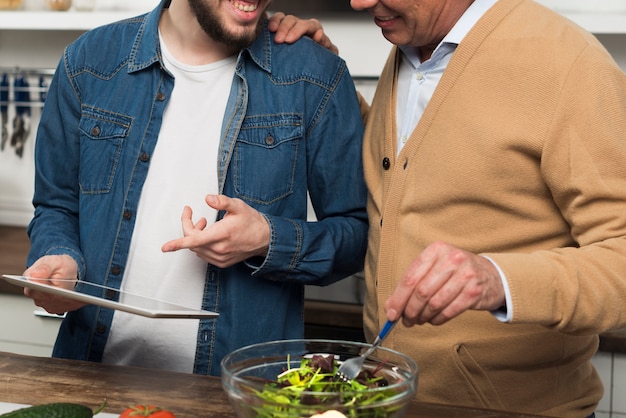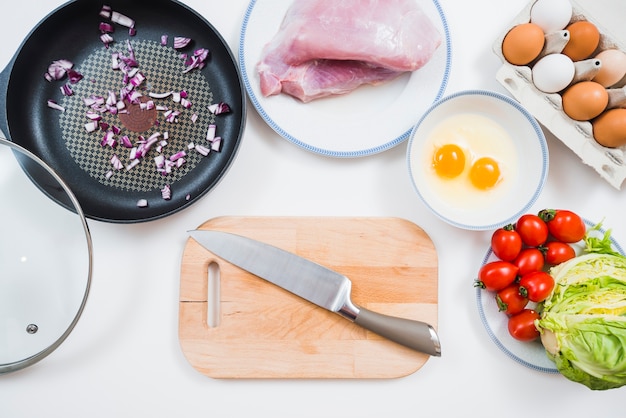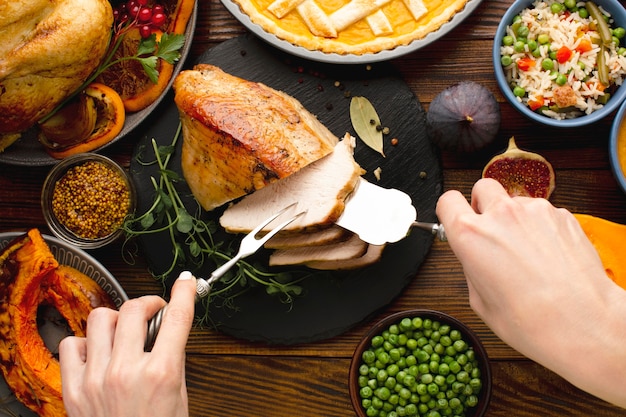Let's talk cod. It's a real crowd-pleaser, isn't it? Mild, flaky, and versatile – you can bake it, fry it, grill it, poach it, you name it. But the one thing that can completely change the game with cod is the temperature. Get it wrong, and you'll end up with a dry, rubbery mess. Get it right, and you'll be rewarded with tender, succulent fish that melts in your mouth. I'm talking about the kind of cod that makes you say, "Wow, that's amazing!"
I've been in the kitchen for ages, and I've learned a thing or two about cooking cod over the years. I've had my fair share of disasters, believe me! But I've also had some truly incredible cod dishes, the kind that make you want to lick the plate clean. And it all comes down to getting the temperature just right. So, let's delve into the world of cod cooking and explore the perfect temperature for achieving those delicious results.
Part 1: Unveiling the Secrets of Cod

Why Cod is So Sensitive to Temperature
Before we jump into specific temperatures, let's understand why cod is so sensitive to heat in the first place. It's all about the fish's structure. Cod is considered a lean fish, which means it has a lower fat content compared to, say, salmon or mackerel. This lack of fat makes cod more prone to drying out during cooking. Think of it like this: when you cook cod, the heat causes the proteins in the fish to tighten and contract. If the temperature is too high or the cooking time is too long, those proteins will contract too much, resulting in a tough, dry texture.
The Crucial Role of Heat Transfer
Temperature plays a vital role in how heat is transferred to the cod. A high temperature, like a searing hot pan, transfers heat quickly, causing those proteins to contract rapidly. This is great for achieving a crispy crust on the outside, but not so great for tender, moist cod. On the other hand, a lower temperature transfers heat more slowly, giving the proteins more time to relax and retain their moisture. It's like a gentle embrace for the fish, allowing it to cook through without becoming dry and tough.
Part 2: The Golden Temperature Zone

So, what's the perfect temperature range for cooking cod? Think of it as a magical zone where tender, flaky perfection awaits. The ideal temperature for cooking cod is between 140°F (60°C) and 150°F (65°C). This range ensures that the fish cooks evenly and retains its moisture.
Factors that Influence the Perfect Temperature
However, this is just a starting point. The ideal temperature for your specific cod dish will depend on a few factors:
- The Thickness of the Cod: Thicker cod fillets will need a slightly higher temperature and longer cooking time compared to thinner fillets. The thicker the fish, the longer it takes for heat to penetrate to the center.
- The Cooking Method: Baking, frying, grilling, and poaching all involve different heat transfer properties and will influence the ideal temperature. For instance, a hot oven will cook cod more quickly than a simmering pot of poaching liquid.
- Your Personal Preference: Some people prefer their cod cooked a little more thoroughly, while others like it more flaky. It's all about what you enjoy! Experiment a little to find your sweet spot.
Part 3: Exploring the Cooking Methods

Now, let's take a closer look at the most common ways to cook cod and discuss the ideal temperature for each method.
1. Baking Cod: A Gentle Approach
Baking is a wonderful way to cook cod. It allows the fish to cook evenly and retain moisture. The oven temperature controls the cooking time, so it's essential to get it right.
Ideal Oven Temperature for Baking Cod:
The ideal oven temperature for baking cod is between 350°F (175°C) and 400°F (200°C). This temperature range ensures that the fish cooks through without drying out, resulting in tender and flaky cod.
Tips for Baking Cod:
- Use Parchment Paper: Line your baking sheet with parchment paper to prevent the cod from sticking. It also makes for easier cleanup!
- Season Generously: Season the cod generously with salt, pepper, and any other herbs or spices you like. Think lemon zest, thyme, or garlic - the possibilities are endless.
- Bake Until Flaky: Bake the cod for 15-20 minutes, or until it is opaque and flakes easily with a fork.
2. Pan-Frying Cod: Crispy Perfection
Pan-frying is a quick and easy way to cook cod, perfect for a weeknight meal. It gives the fish a nice crispy exterior and a tender interior. It's all about achieving that golden-brown crust and juicy center.
Ideal Pan-Frying Temperature:
The ideal temperature for pan-frying cod is between 350°F (175°C) and 375°F (190°C). Use a skillet or frying pan with a good amount of oil. You want the oil to be hot enough to sizzle when you add the cod, but not so hot that it burns the fish.
Tips for Pan-Frying Cod:
- Pat it Dry: Pat the cod dry with paper towels before you fry it. This will prevent excess moisture from steaming the fish and making it soggy.
- Don't Overcrowd the Pan: If you have a lot of fish, cook it in batches to avoid lowering the temperature of the oil too much. This ensures even cooking and a crispy crust.
- Fry Until Golden: Fry the cod for 3-4 minutes per side, or until it is golden brown and cooked through.
3. Grilling Cod: A Smoky Delight
Grilling cod gives it a smoky flavor and a beautiful char, perfect for those warm summer evenings.
Ideal Grilling Temperature:
The ideal temperature for grilling cod is medium-high heat, between 400°F (200°C) and 450°F (230°C). If your grill has a temperature gauge, aim for this range.
Tips for Grilling Cod:
- Clean and Oil: Make sure your grill is clean and well-oiled to prevent the cod from sticking. A little oil goes a long way.
- Grill Until Cooked Through: Grill the cod for 4-6 minutes per side, or until it is cooked through. You'll know it's done when it flakes easily with a fork.
- Add a Glaze: You can add a marinade or glaze to the cod before grilling for extra flavor. Think lemon and herb, honey soy, or chili lime - the possibilities are endless.
4. Poaching Cod: Gentle Cooking for Tender Results
Poaching is a gentle way to cook cod, preserving its delicate texture and allowing it to absorb the flavors of the poaching liquid.
Ideal Poaching Temperature:
The ideal temperature for poaching cod is between 160°F (70°C) and 180°F (80°C). The poaching liquid should be simmering gently, not boiling.
Tips for Poaching Cod:
- Flavourful Liquid: Use a poaching liquid like white wine, broth, or water infused with herbs and spices. Think bay leaves, thyme, or dill.
- Poach Until Flaky: Poach the cod for 5-7 minutes, or until it is cooked through. It should be opaque and flake easily with a fork.
- Pat It Dry: Remove the cod from the poaching liquid and gently pat it dry before serving. This will prevent it from being soggy.
Part 4: Mastering the Art of Checking Doneness
So you've cooked the cod at the perfect temperature, but how do you know if it's actually cooked through? Here are a few foolproof methods for checking doneness.
1. The Fork Test: A Classic Approach
The most common way to check for doneness is to insert a fork into the thickest part of the cod. If the fish flakes easily, it's done. If it's still resistant, it needs a bit more time.
2. The internal temperature: For Accuracy
For a more accurate check, use a meat thermometer to check the internal temperature of the cod. The fish is done when the internal temperature reaches 145°F (63°C).
3. The Appearance: Visual Clues to Doneness
Cod will turn opaque when it's cooked through. It will also lose its raw, translucent appearance and become firm to the touch.
Part 5: Rescue Strategies for Overcooked Cod
We've all been there - you've cooked the cod for what you thought was the perfect amount of time, but it's dry and tough. Don't despair! Here are a few tricks to rescue your overcooked cod.
1. The Shredding Method: A Versatile Option
If the cod is a little overcooked but not too dry, you can shred it and use it in other dishes. Shredded cod works well in salads, sandwiches, tacos, and soups. It adds a delicate flavor and a bit of texture.
2. The Sauce Rescue: A Flavorful Solution
If the cod is quite dry, you can try adding a flavorful sauce to help rehydrate it. Try a creamy sauce, a tangy sauce, or a tomato-based sauce. The sauce will add moisture and enhance the flavor of the fish.
3. The Mash Method: A Creative Twist
If all else fails, you can always mash the overcooked cod and use it in a dip or spread. This works particularly well with cod that has been baked or poached. You can add herbs, spices, and cream cheese to create a delicious and easy appetizer.
Part 6: Avoiding Common Mistakes
Here are a few common mistakes that can lead to overcooked or dry cod. Avoid these pitfalls and you'll be on your way to cod-cooking success.
1. Overcrowding the Pan: Space is Key
Overcrowding the pan will lower the temperature of the oil or poaching liquid, making it more difficult to cook the cod evenly. Give the fish some breathing room!
2. Cooking at Too High a Temperature: Be Gentle
Cooking cod at too high a temperature will cause it to cook too quickly and dry out. Stick to the ideal temperature ranges for each cooking method.
3. Not Checking for Doneness: Stay Vigilant
Don't assume the cod is cooked through based on the time alone. Always check for doneness using the methods mentioned earlier.
Part 7: Essential Tips for Tender, Moist Cod
Here are some handy tips to help you ensure your cod is tender and moist every time.
1. Use Fresh Cod: The Best Quality
Fresh cod is always going to be the best option. It has a more delicate texture and a brighter flavour.
2. Pat the Cod Dry: Prevent Sogginess
Patting the cod dry with paper towels before cooking will help prevent excess moisture from steaming the fish and making it soggy.
3. Season the Cod Generously: Enhance the Flavor
Seasoning the cod generously with salt, pepper, and any other herbs or spices you like will enhance the flavor and make it more appealing.
4. Don't Overcook It: Timing is Everything
This is the most important tip. Cod cooks very quickly, so it's easy to overcook it. Watch it closely and check for doneness frequently.
Part 8: Frequently Asked Questions
1. Can I Cook Cod From Frozen?
Yes, you can cook cod from frozen. However, you will need to adjust the cooking time. For frozen cod, add 5-10 minutes to the cooking time listed in the recipe.
2. How Long Can I Store Cooked Cod in the Fridge?
Cooked cod can be stored in the fridge for 3-4 days. Make sure to store it in an airtight container to prevent it from drying out.
3. What are Some Good side dishes for Cod?
Cod pairs well with a variety of side dishes, including roasted vegetables, steamed greens, rice, potatoes, and pasta.
4. How Can I Prevent Cod From Sticking to the Pan?
To prevent cod from sticking to the pan, make sure the pan is well-oiled and hot before you add the fish. You can also use a non-stick pan or parchment paper.
5. Can I Use Cod in Other Recipes?
Absolutely! Cod is a versatile fish that can be used in a wide range of recipes, including fishcakes, pies, stews, and curries.
Part 9: A Final Word
So there you have it, a comprehensive guide to cooking cod at the perfect temperature. Remember, it's all about finding that sweet spot between a perfectly cooked, tender fish and a dry, overdone mess. With a little bit of care and attention, you can create delicious cod dishes that will impress your friends and family.
I've certainly learned a lot about cooking cod over the years, and I hope my tips and tricks will help you avoid the pitfalls and achieve truly delicious results. Happy cooking!
Everyone is watching

Prime Rib Roast Cooking Time Chart: Per Pound Guide
Cooking TipsPrime rib roast. Just the name conjures images of lavish dinners, crackling fires, and hearty laughter. It’s ...

How Long to Bake Potatoes in the Oven (Perfect Every Time)
Cooking TipsBaked potatoes are a staple in my kitchen. They're incredibly versatile, delicious, and surprisingly easy to m...

Perfect Rice Every Time: The Ultimate Guide to Cooking Rice
Cooking TipsAs a self-proclaimed foodie, I've always been a bit obsessed with rice. It's the foundation of countless cuisi...

The Ultimate Guide to Cooking Asparagus: Tips, Techniques, and Recipes
Cooking TipsAsparagus. The mere mention of this spring delicacy conjures up images of vibrant green spears, crisp and burs...

Ultimate Guide to Cooking the Perfect Thanksgiving Turkey
Cooking TipsThanksgiving. Just the word conjures up images of overflowing tables laden with delicious food, the scent of r...
